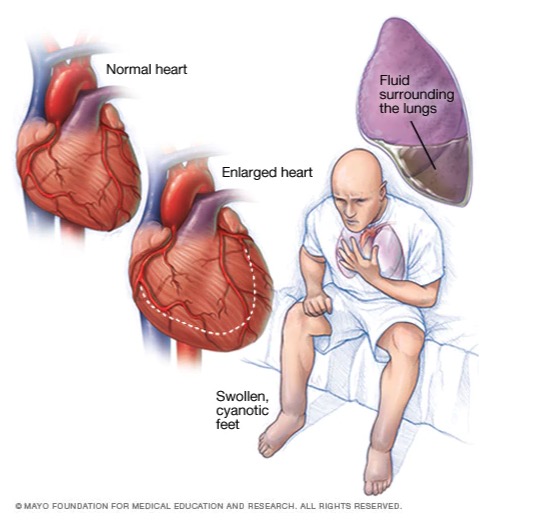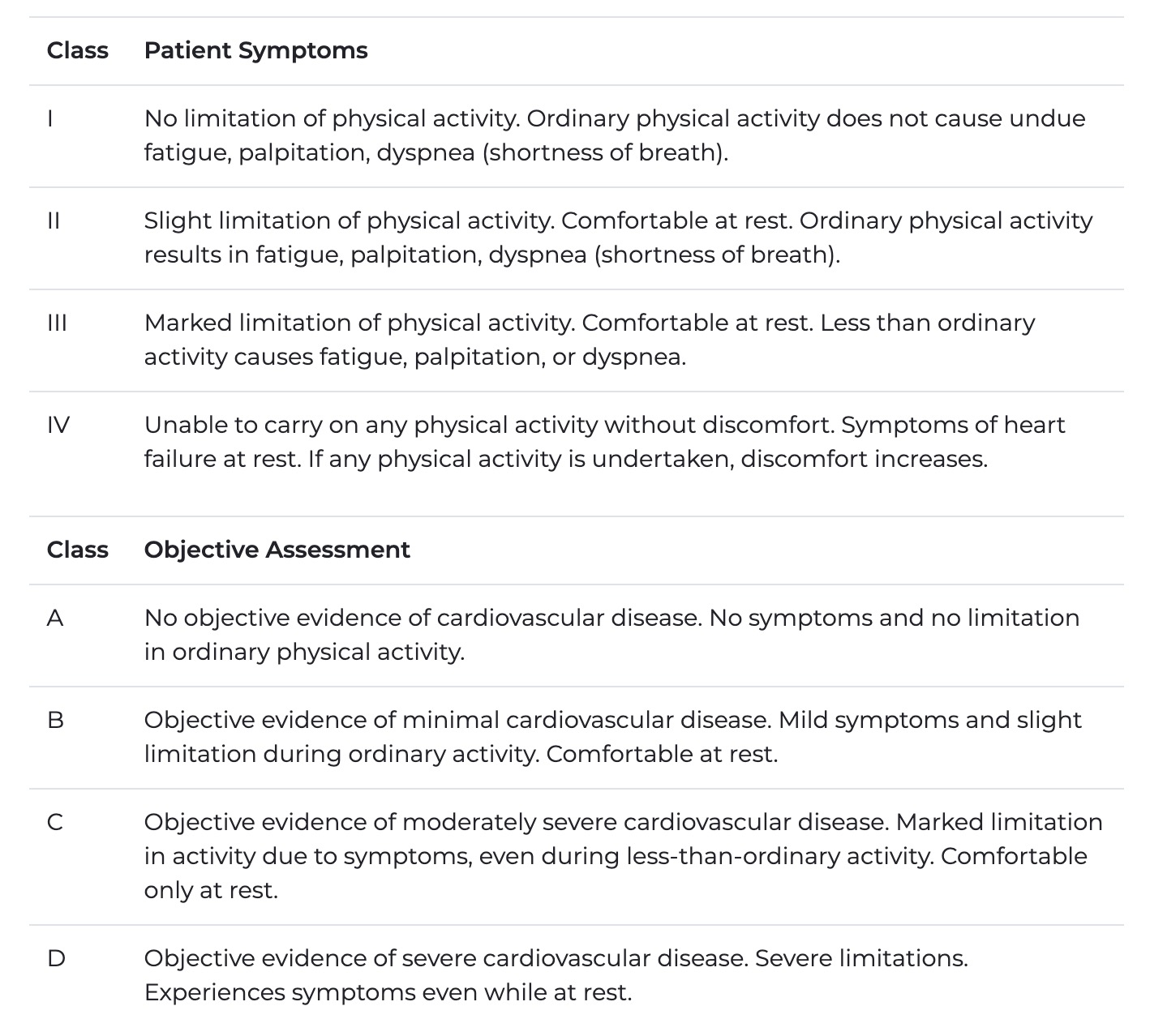Page Contents
OVERVIEW
This page will cover how to evaluate for and contextualize heart failure in a patient that is being considered for/worked up for a radiology procedure. Heart failure is an important concept/diagnosis to understand given its prevalence and severity.

WHAT IS HEART FAILURE?
At its core, heart failure is a very self descriptive diagnosis. It describes a process of circulatory dysfunction where the heart is unable to appropriately pump. This not only can lead to an issue with blood delivery to important tissues, but also is responsible for the “backing up of blood” behind the heart which results in the symptoms that are classic for this disease process.
These symptoms include:
- Shortness of breath/dyspnea: from pulmonary edema caused by left heart dysfunction.
- Lower extremity swelling: caused by peripheral edema brought on by right heart dysfunction.
- Hypotension/poor perfusion: this can manifest as vital sign abnormalities and also can manifest with associated symptoms such as light headedness and signs of organ dysfunction (such as worsening renal function etc).
HOW DO WE CLASSIFY HEART FAILURE
Not all heart failure is the same, and it is important to realize that it falls into a few discrete categories:
Left sided heart failure: this type of heart failure has its own subdivisions
- Heart failure with reduced ejection fraction (HFrEF): this is also characterized by the term “systolic dysfunction”.
- Heart failure with preserved ejection fraction (HFpEF):this is also characterized by the term “diastolic dysfunction”.
Right sided heart failure: this can occur in isolation or can be the result of left sided heart failure causing right sided heart failure.
HOW TO QUICKLY AND EFFICIENTLY EVALUATE HEART FAILURE PRIOR TO A PROCEDURE
Below is a systematic approach on how to evaluate a patient with heart failure/suspected heart failure prior to a procedure.
Make/confirm the diagnosis:
There is no one diagnostic criteria for heart failure, however there are some general findings that are consistently seen among patients.
Echocardiogram results (ejection fraction): most all patients should have an echocardiogram. It is important to evaluate the patient’s ejection fraction (EF) in characterizing the type and severity of heart failure. An ejection fraction ≤ 40% is characteristic of systolic dysfunction.
Echocardiogram results (other): in addition to the ejection fraction, echocardiograms can give a variety of different pieces of information (valvular disease, kinetic dysfunction of the ventricles/atria) that can further characterize the patient’s heart failure. Make sure to evaluate for any other relevant information from the echocardiogram report.
Characterize the severity of the disease:
This may not always be easy to do from a chart review, however it is useful to be comfortable with one of the most common classifications systems used to assess the severity of a patient’s heart failure.
New York Heart Association (NYHA) Functional Classification: simply put this classification system uses subjective and objective measures to classify a patient’s functional status in the setting of their heart failure:

Page Updated: 09.20.2020